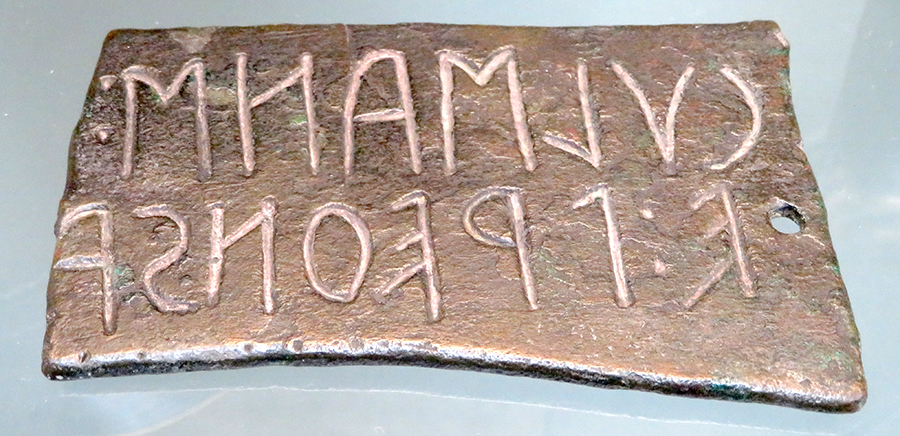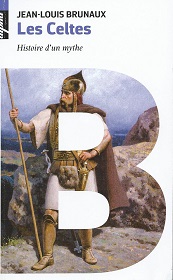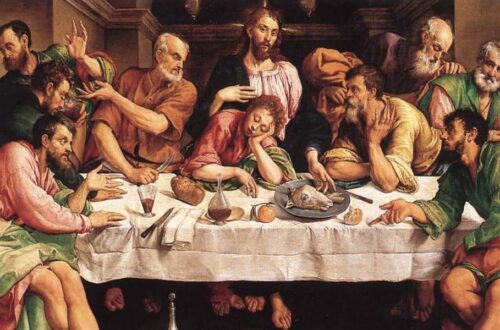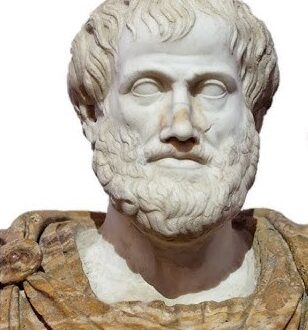
Runes and the Etruscian-Venetian Alphabet
A problem for chronology and for the theory of communication
The fundamental proposition of the communication-theory says: It is impossible not to communicate. For each sender of an information there is a receiver. As compared with the problem of the old and eldest alphabetical systems there are inconceivable ascertainments of historians, which cannot be followed by horse sense. Just the problem of runes and Etruscian-Venetian alphabet points out that there have to be realized chronological dislocations of the widest scope. Pierguiseppe Scardigli shows in his excellent, but strictly obliged to the orthodox chronological system, treatise ‘To the Origin of the runic letters from the Northern Etruscian characters[1] the vast stilistic and epigraphic similarity of both types by numerous evident faces.: “The evidence of a connection between the Northern Etruscian and Germanic realm are now incontestable…(!)”, but have to resume afterwards: “One of the numerous unsolved problems is for example the temporary gap between the embodiments of pre-Latin writing in Northern Italy… and the Runic letters…”
Here the author puts his hand deep in the festering wound of the medieaval action of forging the world history, but without finding an answer to the problem. After all it refers to spaces of time which are separated not less than 400 years – an inexplicable dark age in which both types has vanished from earth completely, and that from the last centuries of the first millenium B.C. to the 2nd and 3rd century. The more inconceivable it is how the Etruscian letters could appear totally unexpected like from nowhere at the Germanic people in Scandinavia, in England, Romania, at he Alps, at the Alamans of Southern Germany a. s. o. and this in barely changed form. But the question hinges not only on about 400 years. If for the Etruscian letters are claimed a period of using from the early 7th century B. C. to about 200 B. C., but for the runes from about 200 to the 14th century of the Christian Era, there is yawning a temporary shift of not less than 900 years in the starting point of both types.
But for which exceedingly similiar types in almost whole Europe when it is chronologically impossible that continental communication existed at all? A brain-twisting belief… The Etruscian-Venetian-Germanic letters could only have been used at the same time! But if the Etruscian epoch draws near the 14th century the period, in which the Roman Empire with its Latin language and writing should habe been exist, will be eliminated. One of the most provocative theories of the Moscow Chronology-critics Anatolij Fomenko[2] has found a material proof, but not the only one.
How should we imagine the Roman Empire after all? If we take both periods in congruence, the Etruscian epoch from ~700 B. C. to ~200 B. C. and the time of migration of nations, the early und high Middle Ages of the Teutons and Vikings from ~200 to 1400, it´s getting obvious, that the thesis of Fomenko must be true, the Roman Empire and civilization with its architecture and literature might habe been identical with the Renaissance resp. only a virtual by time-forgering literature artificially aged construction of this late Middle Age epoch.
Classical Roman Architecture is in Reality Hellenistic
The objection that the architecture of the Romans is demonstrable on a large scale and that therefore the Romans must have exist plainly is a fallacy. Because this buildings laid in ruins almost throughout the Middle Ages and therefore they have to originate before a period-separating catastrophe they are not explainable by the imitating buildings of the Renaissance. This buildings refers to temples and arenas of the hellenistic epoch, which started in Italy at the same time as the Etruscian epoch and run parallel with it and which should habe been exist, according to the orthodox theory, only in Sicilia and Southern Italy. Logically the mass of ostensible Roman buildings can only be connected to a civilization which talked Greek.
The Roman Literature is Temporary to the Renaissance
All written evidence of alleged Roman times in Latin language and letters, the biographies of the Cesars, Tacitus, the philosophers of the state and many more are therefore faked and originated not before 1400. Also Wilhelm Kammeier[3] had claimed in the 30ies of the 20th century that Middle Ages and early Christianity are forgeries of the Humanists. The question arises what was the motive of this forgery – and the answer can only be found in the pivotal of christianity, which was the dominant ideology of this time with absolut power, in the Christian calendar, which is founded purely and simply on the historical authenticity of Jesus Christ. The doubts of historians about the real existence of the Saviour are vast. The forged datings of epochs and civilized nations (e. g. the Etruscian and Celtic-Germanic) make plain when more than 1000 years have to be striked off the calendar that he couldn´t have exist in the alleged space of time 2000 years ago. How this forgery of calendar was managed only at about 1500 shall be shown in a following article.
The Latin language und letters are arranged by the science of history chronologically after the Etruscian as that. Consequently you cannot face the introduction of Latin characters before about 1400 in whole Europe, and thereby it becomes clear that Germanics and Romans resp. Italians introduced the Latin characters at the same time. Another not concerted action would have been total nonsense as defined by the theory of communication. Writing serves the purpose of communication, that´s how it is. An one-sided proceeding would habe been a failure for all. The sender would have been in need of a receiver.
Thereby one of the big mysteries of the authors schoolyears finds it solution, that is why are the Germanics assumed to be incapable to learn the Latin characters and communicate with the Romans. The archeologists and the science of history cannot detect any documentary evidence of correspondence of both civilizations. Our ancestors surely might not have been so stupid, in no case less intelligent than the colonized folks of the last centuries, who altogether learned the writings of their conquerors and used it busy.
Were the Romans in Reality Goths?
But where did the Romans come from then? When were the Latin language and writing first time appearing? You know the bible of Wulfila, the so called Codex Argenteus, which was alleged written in the 6th century in Upper Italy. Its language is called to be Gothic. This opus is in fact “the oldest Germanic evidence of writing within the meaning of book-literature”. A strong influence of the Byzantine culture is reasonable.
Wulfila´s father was a Goth, his mother came from the territory of the present Turkey. He himself had a Roman education and was a follower of the Arius, therefor an Arian. Since alleged 341 he practised missionary work on behalf of the patriarch of Konstantinople north of the Danubian limes for 7 years. For the purposes of this missionary work his bible-translation came into being, in favor of he created a „Gothic alphabet“ of runes and Greek-Roman letters.
The question arises if his opus in Germanic language, which was only dedicated to the folks of the North and an unalterable part of his missionary work, realy reflects the Gothic language, could it be that the Gothic language was not at all Germanic but Roman? Uwe Topper[4] was engaged in the fundamental problem of the Gothic language. What does this language look like? Where have been preserved vestiges of this old language? It is said that in France the Wisigoths founded a great kingdom, therefore many vestiges of this extinct language must be found in the present French language. But the only five words Topper found are onomatopoeic and could have been invent just as good by mumbling babies. Topper infers that the Gothic language is in reality the old French, a part of the Roman speech area. Did the Goths talk Roman, did they come from Romania, the present Roumania in Eastern Europe? The country of origin of the Goths is also located at the Black Sea. With that the expansion of the Roman Empire gets vice versa: Not from Rome to the East but in the opposite direction. Not before the conquest of Rome by the Ostrogoths the Latin language and writing arrived at the former Etruscian-Helenistic metropolis.
An added indication you can find on Mauro Orbini, who penned a world-history with an amazing effect in the year 1601, in which nothing seems to be comparable with the present guilty history. On him the Slavonians originated in Scandinavia und settled down on the Balkan, from there they have found an empire of their own.
But the most cryptic for the author in this book is the representation of a noble family named Balsi[5], whose coat of arms shows a sevenstar on a three-stepped pyramid, which is distorted in a way (two of the beams are pointing up and down and are symbolizing the vertical line as a meridian) which you can find only more in the coat of arms of the knights of Sternenfels over the church-portal of this little „Kraichgau“-community.[6]
But the descent of the Balsi-family is designated as „gotroman“(Gothic-Romanic). Was this empire of the Slavics in the East therefore in reality the kingdom of the Goths (Romanics), which also expanded up to Konstantinople, consequently the Byzantine Empire?
Wulfila´s mother came from Asia Minor. But there the Celts, precisly the Volcae under Bolgios (Bulgaria), had found an kingdom. Also the Germanics (Teutons), better to say the Germans, founded there during the crusades a crusader-state. Citys like „Germanopolis“ reminds that even today. Because on Fomenko´s history-critical method such events in similar epochs have to synchronize, total new aspects arise. Did Wulfila learn his Germanic by his Kappadokian-Celtic mother?
Celts talked Germanic
The further conclusions are just so surprising. Etruscans in the present guilty chronological order of the prehistory are considered to be contemporary to the Celts. Active trade is verified by many examples. But til nowadays there is not found any material evidence of a Celtic language of the continent (contrary to the Gaelic of the British Islands, which is still alive today), not a single sentence is recorded, well, the Celtic language is supposed to be delivered merely in designations of landscapes (names of hills, rivers, plains, a. s. o.). Now it is clear that the Celts of Germany talked Germanic, namely an archaic Proto-Germanic which is ascertainable in many inscriptions. It should also be surprising to us that the Slavonian language was talked in many regions of Southern Germany, scarcely unadulterated Slavic place-names give information about the former settlement. Bilingual place-names like „Birkenfeld“ near Pforzheim in direct neighbourhood to „Brötzingen“, which means in Slovene birch (brezje), or „Berghausen“ near Karlsruhe next to „Grötzingen“, of which name also means a hill (gric) are making clear that Germanics and Slavics settled immediatley side by side.
These Slavonians, here I agree with researchers like Gert Meier and Uwe Topper, can be recognized as Venetians, who are reported since the dawn of history by Greek and Roman geographers and are traceable almost in whole Europe, a folk which must have been organizing the intercontinental trade of the prehistory and early history from Venice resp. Venetia of course. Accordingly to this the Etruscian-Venetian alphabeth diffused with the trade relations. And the not yet known language of the Etruscian must have been a prototype of the Slavic or Slovene 8).
A forgotten civilisation
Herewith it´s becoming more and more obvious that the civilization of the North must have been just as superior as the South, because they had command of the same only adapted and modified runic source, a matter of fact which gives Scardigli an idea of „a continuity which is due to strict organization“.
But how shall we imagine this continent-comprising cultural organization? After all this conception contradicts to all hitherto accustomed clichés of Germanic tribes and their unability of formation of states, this is how you have to read Tacitus.
The discovery of colossal stone-monuments in huge cuts in the rock of the secondary chain of mountains[7] makes clear that a complete high civilization with its material architectonic evidence was totally failed to notice. The greater part of this gigantic buildings (lateral lengths up to 250 m and 440 m) are barrows (long cairns). It is to be expected that the most of them are stepped like similar as pyramids supposed buildings on the Canarian Islands. Therefore it refers to a type of Northern-German and Northern-European „Hünenbetten“ (barrows), which is only accomodated to the mountainous country and its stone deposit.
But the widespread erection of this high-class grave-mounds requires certainly a differantiated social organization. In this case builders were at work who were able to calculate mathematically and to plan constructionally, who had complete command of trigonometry and geometry and of course used a system of letters and figures, the runes.In the mess of falsificated historical documents are there any indications of how we should imagnine this high developped civilization and its polity? Surely, you only have to recognize the descriptions of the attributed early and high Middle Ages as Germanic-Celtic, to deliver them from their christian-clerical adornments and you have the real sovereigns, Gallic-Romanic cesars and Celtic-Roman emperors.
In this manner Barbarossa, the Suebian prince and emperor of the Holy Roman Empire, becomes the last Celtic-Germanic cesar. In which way this has to be proved requires further formulated articles, that shall introduce to the extensive research work of the time -reconstructors.
Notes
[1] Piergiuseppe Scardigli, “Die Etrusker und Europa”, Fabbri Editori, Paris 1992
[2] Anatolij Fomenko, “Emperico-Statistical Analysis of Narrative Material…”, Kluwer Academic Publishers, Dordrecht 1994
[3] Wilhelm Kammeier, “Die Fälschung der deutschen Geschichte”, Leipzig 1935; ders., “Rätsel Rom im Mittelalter”, Leipzig 1937; ders., “Dogmenchristentum und Geschichtsfälschung”, Leipzig 1938
[4] Uwe Topper, “Die Große Aktion” (Tübingen 1998)
[5] Mauro Orbini, “Il Regno degli Slavi – Origine degli Slavi et Progresso dell Imperio Loro”, Pesaro 1601, München 1985
[6] Savli, Bor, “Unsere Vorfahren – Die Veneter”, Wien 1988
[7] K. Walter Haug, “Die Entdeckung deutscher Pyramiden – Sensationelle Megalith-Ruinen einer versunkenen Hochkultur im Mittelgebirge”, Cernunnos-Verlag Walzbachtal 2003, ISBN 3-00-007639-5





One Comment
visi here
Helpful information. Lucky me I discovered your site by accident, and I’m stunned why this twist of fate didn’t happened in advance!
I bookmarked it.